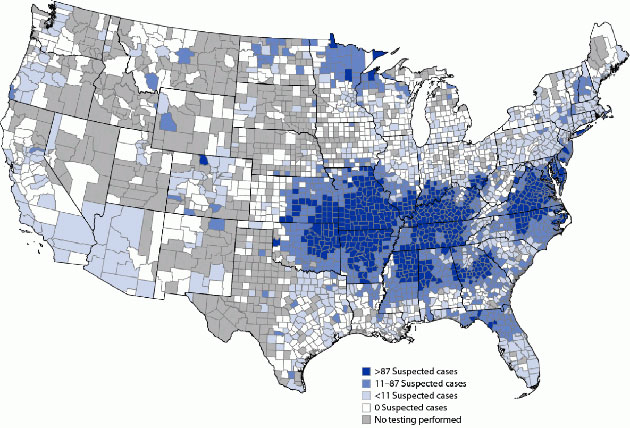
The lone star tick (Amblyomma americanum) has long been associated with alpha-gal syndrome (AGS), the red meat allergy that has become increasingly prevalent. However, recent research reported by NBC News reveals a potentially surprising development: this tick species may not be the sole culprit.
The report includes how the Centers for Disease Control and Prevention (CDC) describes a case of AGS in Washington implicating the western black-legged tick (Ixodes pacificus). Per NBC News, a 61-year-old woman “in Washington state “went into anaphylactic shock 29 days after she remembers being bitten by a tick on her shoulder: After eating beef tacos, she broke out in hives and her tongue and throat swelled. It happened again after she ate pork.”
Another case in Maine implicates the black-legged tick (Ixodes scapularis, also known as the deer tick). Per NBC News, a 45-year-old woman “had stomach pain and general malaise about two-and-a-half hours after she ate roasted rabbit. About nine days earlier, she had removed a deer tick from her arm. After that first incident, she’d get sick a few hours after she ate any type of red meat. Beef elicited a bout of vomiting and diarrhea that eventually landed her in her doctor’s office.”
Both cases were published Wednesday in the CDC’s journal, Emerging Infectious Diseases.
Currently, the CDC’s map of suspected AGS cases shows high concentrations in Alabama, Arkansas, Georgia, Mississippi, Missouri, Kansas, Kentucky, Oklahoma and Tennessee, as well as some activity in Maryland, North Carolina and Virginia.
What is AGS?
When ticks bite, they release a steady stream of saliva that contains chemicals that keep their victim’s blood flowing as they feed. Sometimes, the saliva contains a sugar molecule called alpha-gal. Alpha-gal syndrome, a reaction to the molecule that occurs in some people, causes a red meat allergy.
Unlike most other tick-borne ailments, according to NBC News, “alpha-gal syndrome is not caused by a bacterium or virus. The syndrome is instead an immune reaction to alpha-gal, a sugar found in almost all nonprimate animals, including cows, horses and deer and which can be present in tick saliva.
“For some people, being exposed to alpha-gal through a tick bite triggers an immunoglobulin E, or IgE, antibody response in the body. People who mount this response develop an allergy to meat that can take weeks to months to appear,” although for some, the reaction can occur within mere hours after eating.
“Alpha-gal syndrome was discovered in 2009, and researchers are still working to answer a lot of questions about it — including why some people react to alpha-gal while many do not.”
What this means to PMPs
This information is crucial for pest management professionals for three main reasons:
- Expand your client education. Let customers know about the potential risks posed by a wider range of tick species, not just the lone star tick. And tell them about more than AGS: May is National Lyme Disease Awareness Month, for example.
- Expand your tick management program and training. Emphasize the importance of comprehensive tick control measures and learn how to target multiple species. Protect yourself and your team with proper personal protective equipment (PPE) when treating tick accounts.
- Prepare for increased public awareness. It’s a good idea to create a script for your office and sales teams to use as the weather gets warmer and calls come in about tick control and prevention. It’s important to sound authoritative, with the data to back you up, but not frightening. Let callers know that you can help them mitigate the risk.
Source: NBC News, “Alpha-gal syndrome, tick-induced red meat allergy, may be caused by more species,” March 25, 2025
Leave A Comment